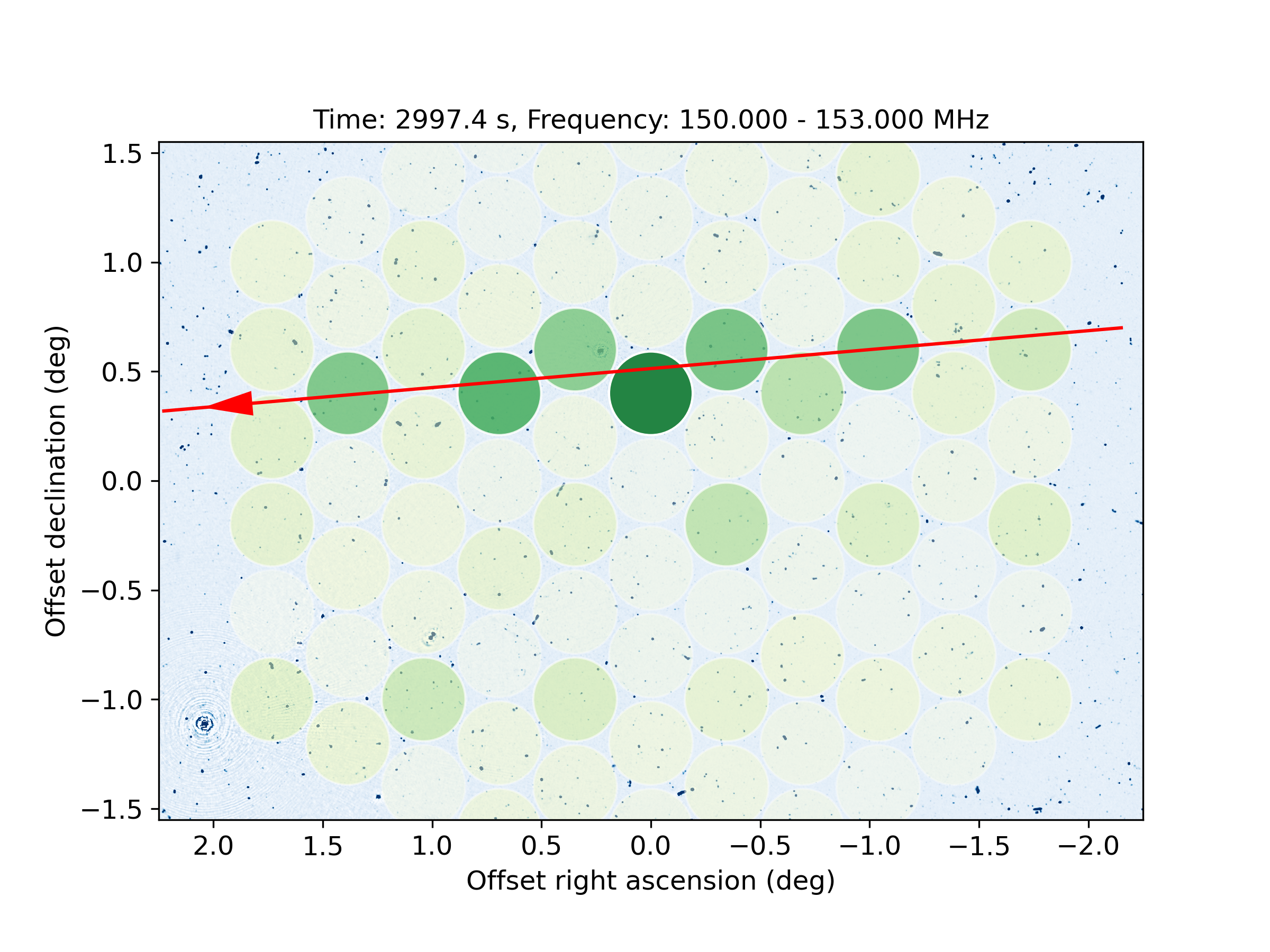
Caption top figure: Detection of unintended electromagnetic radiation coming from a Starlink satellite with the LOFAR radio telescope. The yellow-green circles show the pixels of the synthetic radio camera, which form a hexagonal grid on the sky. The red arrow indicates the predicted motion of a Starlink satellite through the field-of-view of the telescope. Indeed, the satellite caused a signal in the pixels along the track. The background shows a preview of an ongoing survey of the sky currently made with the LOFAR telescope (“The LOFAR Two-metre Sky Survey”, Shimwell et al., in prep.). The blue dots and features are galaxies which show up prominently in the radio regime of the electromagnetic spectrum (false colour image). (Credit: IAU/CPS)
The LOFAR radio telescope has shown that satellites can unintentionally emit radio waves that interfere with the telescope. If not addressed, their radio emission could close valuable windows into the Universe. This research emphasises the importance of collaboration between astronomy and industry to overcome these issues and establish regulation to control emissions.
The study, accepted for publication in Astronomy & Astrophysics, used the LOFAR radio telescope in the Netherlands to observe satellites from SpaceX's Starlink constellation in April 2022. While being licensed to operate within the 10.7 to 12.7 GHz radio frequency band, primarily designated for internet connectivity, these satellites were found to emit electromagnetic signals at significantly lower frequencies, as detected by LOFAR.
The authors report that radio signals were detected with LOFAR between 110 and 188 MHz for 47 out of the 68 satellites that were observed. This frequency range includes a protected band between 150.05 and 153 MHz, which is specifically allocated to radio astronomy by the International Telecommunications Union (ITU). The authors conclude that the detected emission is emanating from onboard electronics, and hence distinct from intended communications transmissions.
SpaceX is currently not violating rules, as for satellites, these kinds of signals are not covered by any international regulation. This absence of regulation may jeopardise radio astronomy, as several large constellations of satellites in low-Earth orbit are currently under construction or planned to be launched in the future. In their press release the authors encourage satellite operators and regulators to consider this impact on radio astronomy in spacecraft development and regulatory processes alike.
René Vermeulen, director of the International LOFAR Telescope (ILT), warns: "The cumulative effect of unintended emissions from thousands of low-Earth orbit satellites could (...) introduce disruptive noise across multiple wavelengths, including those reserved for the exploration of deep space. Regulation of this noise is crucial for science."